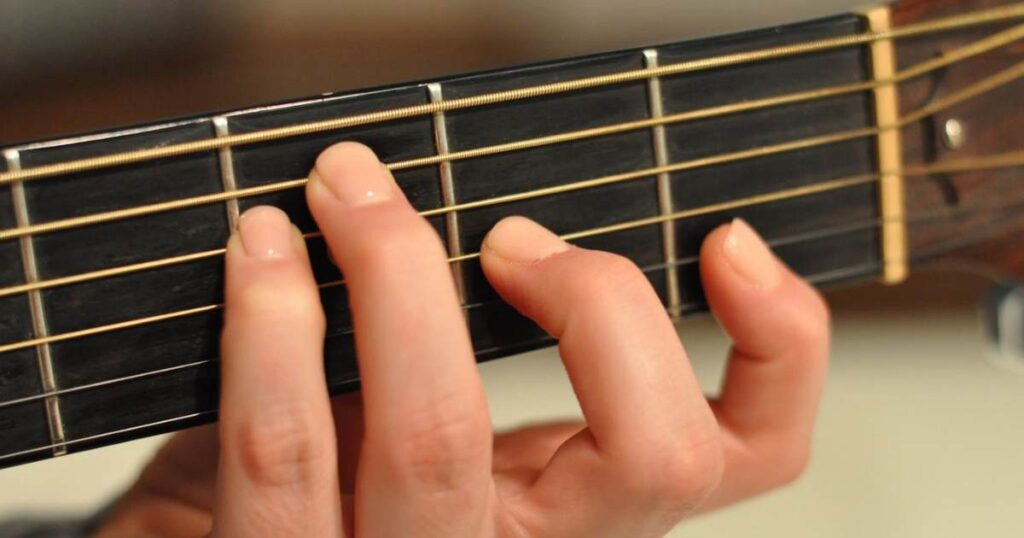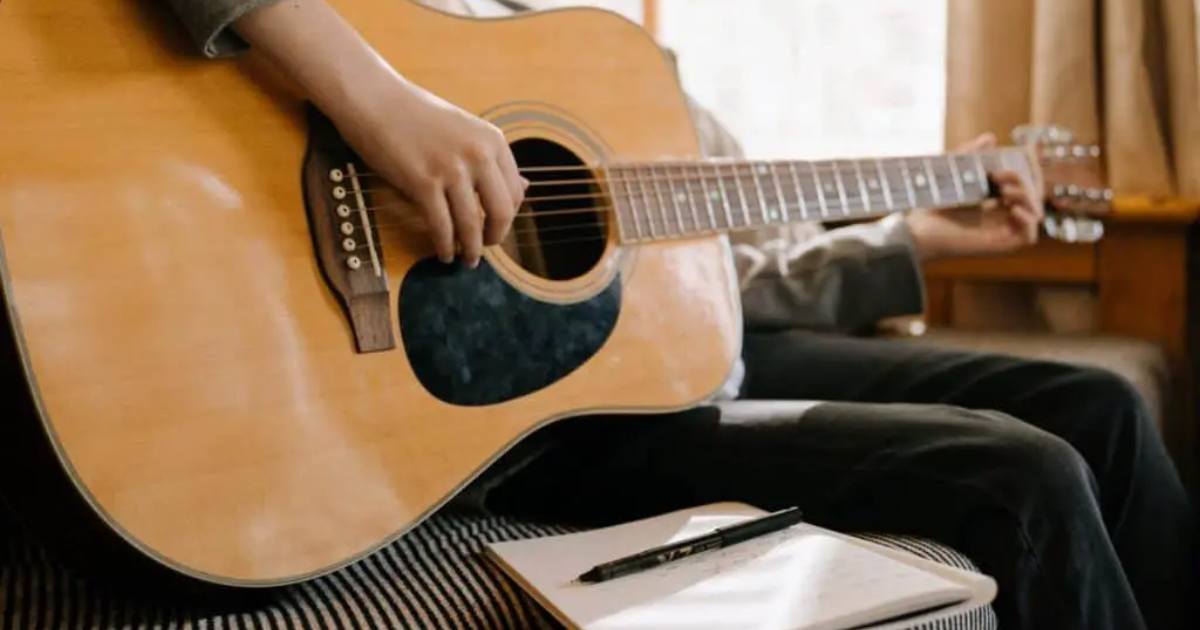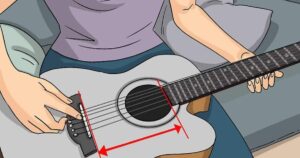Learning How to Play Nutshell on Acoustic Guitar refers to the process of acquiring the skills and knowledge required to perform the song “Nutshell” on an acoustic guitar. This typically involves mastering chords, fingerpicking techniques, and strumming patterns specific to the song.
Picture yourself strumming the hauntingly beautiful chords of Nutshell on your acoustic guitar, captivating your audience with the melancholic melody. Unlocking the secrets to this classic tune can be a rewarding musical journey. Let’s explore how you can make it happen.
To play Nutshell on an acoustic guitar, you’ll need to familiarize yourself with essential chords like E minor, C, and G. The song’s signature picking pattern creates its unique atmosphere. With dedication and practice, you’ll soon be enchanting listeners with this timeless acoustic masterpiece.
Guitar Tuning and Capo Placement
Before diving into Nutshell on your acoustic guitar, it’s vital to get your strings in tune. For this song, you’ll want to use a standard tuning, which is E A D G B e from the thickest to the thinnest string. You can use a guitar tuner or an online tuner app to make sure each string is at the right pitch. Proper tuning sets the foundation for a harmonious rendition of the song.
To capture the authentic sound of Nutshell, you’ll need a capo. Place the capo on the second fret of your guitar’s neck. This simple device helps raise the pitch of your strings, bringing the song to life. The capo’s placement at the second fret alters the key and makes it easier to play the song’s chords while maintaining its unique character. Make sure the capo is firmly attached to ensure your guitar remains in tune during your performance.
Basic Chords Used in the Song
In Nutshell, you’ll be working with some basic chords to create its distinctive sound. The primary chords used in the song are E minor (Em), C, and G. These three chords are the building blocks of the song and are played in various combinations to create the melancholic and haunting melody that Nutshell is known for. Practice switching between these chords to master the song’s progression and capture its emotional depth.
Basic Fingerpicking Technique
The fingerpicking technique used in Nutshell” on acoustic guitar involves plucking individual strings with your fingers to create a rich and intricate sound. Here’s a basic pattern to get you started:
- Start with your thumb (T) on the A string (5th string).
- Use your index finger (I) to pluck the G string (3rd string).
- Your middle finger (M) plucks the B string (2nd string).
- Finally, your ring finger (R) plucks the high E string (1st string).
This pattern, known as T-I-M-R, is repeated in a consistent rhythm throughout the song. It may take some practice to develop precision and timing, but it’s an essential technique to master for playing “Nutshell” and other fingerstyle acoustic guitar songs.
Playing the Intro of Nutshell

To start the intro of Nutshell on acoustic guitar, place your capo on the second fret. Begin with an E minor (Em) chord. Use a fingerpicking pattern (T-I-M-R) on the strings A, G, B, and high E, in that order. Repeat this pattern, creating a hauntingly beautiful melody that sets the tone for the song. Practice it slowly, and with time, you’ll capture the essence of Nutshell.
This intro’s simplicity conceals its emotional depth. Take your time to master this fingerpicking technique, and soon, you’ll be able to play the intro of “Nutshell” with grace and feeling, evoking the song’s unique mood and atmosphere on your acoustic guitar.
Strumming Patterns for the Verses
The verses of Nutshell on acoustic guitar are marked by a gentle and melancholic strumming pattern. Use a down-strumming technique, softly strumming the chords (Em, C, G) in a consistent and unhurried manner. This subtle strumming complements the song’s emotional depth and sets the mood for the lyrics.
Transitioning Between Chords Smoothly

Transitioning between chords smoothly in Nutshell is crucial for capturing the song’s emotional essence. Practice lifting your fingers in unison and placing them on the next chord with precision. Work on muscle memory to ensure fluid changes between E minor (Em), C, and G, maintaining the song’s melancholic flow.
Navigating the Chorus Progression
Navigating the chorus progression in Nutshell involves smoothly transitioning between chords. The chords typically used in the chorus are Em, C, G, and D. To play this section effectively, practice the chord changes, keeping them in time with the song’s rhythm. This skill helps emphasize the emotional depth of the chorus.
Emphasizing the Song’s Dynamics
In Nutshell, dynamics play a pivotal role in conveying its emotional intensity. The song fluctuates between soft and loud passages, creating a poignant contrast. During the softer moments, gently pluck the strings with the fingerpicking technique, allowing the notes to ring delicately. As the song builds, apply more pressure in your strumming or picking to emphasize intensity, all while maintaining a balance that complements the lyrics’ depth.
Additionally, pay close attention to the vocals and lyrics. Adjust your guitar’s volume to complement the singer’s emotions, ensuring that the instrumental parts support the song’s narrative. This nuanced approach to dynamics not only enhances your rendition of “Nutshell” but also helps convey the song’s emotional depth to your audience, creating a captivating and moving musical experience.
Special Techniques for the Bridge
The bridge in Nutshell on acoustic guitar doesn’t require any special techniques. Instead, maintain the fingerpicking pattern used in the song’s intro. Focus on smooth chord transitions, paying attention to dynamics to capture the bridge’s emotional depth and melancholic mood.
Incorporating Slide Guitar Elements

Nutshell” on acoustic guitar doesn’t traditionally feature slide guitar elements. However, you can experiment by incorporating slide techniques to add a unique touch. Use a slide bar on the strings to create a smooth gliding effect, mimicking the song’s melancholic tone. Apply the slide lightly, experimenting with different positions along the fretboard for a hauntingly beautiful and personalized rendition.
Remember, it’s essential to practice sliding without applying too much pressure to avoid disrupting the song’s delicate balance. While not a core element of “Nutshell,” sliding can add an individualized flair to your acoustic rendition, infusing the song with a touch of personal creativity.
Nailing the Solo Section
To nail the solo section in Nutshell on acoustic guitar, focus on fingerpicking. Play the solo melody confidently, ensuring each note resonates clearly. Practice the solo slowly at first, gradually increasing the tempo as you gain proficiency. Maintain emotional depth and precision to capture the essence of this iconic solo.
Tips for Capturing the Song’s Emotion
To capture the emotion of Nutshell on acoustic guitar, consider these tips:
Listen to the original: Study the original song to grasp its emotional nuances.
Dynamics: Vary your strumming or fingerpicking intensity to match the song’s mood.
Subtle vibrato: Add subtle string vibrations to convey sadness and depth.
Expressive phrasing: Play with feeling and interpret the song’s lyrics through your guitar.
Tempo: Maintain a steady pace while adapting to the song’s changing dynamics.
Personal connection: Infuse your performance with your own emotions, making it authentic and moving.
By combining these elements, you can create a heartfelt and emotionally resonant rendition of Nutshell on your acoustic guitar.
Common Mistakes to Avoid
Common mistakes to avoid when playing Nutshell on acoustic guitar include rushing through chord transitions, neglecting dynamics, and over-complicating the fingerpicking. Focus on precision, subtle dynamics, and keeping the performance true to the song’s melancholic simplicity to deliver a captivating rendition.
Practice and Playing Along with the Song
Regular practice is key to mastering Nutshell on acoustic guitar. Start with slow, deliberate repetitions to refine your chords, fingerpicking, and dynamics. Gradually increase your speed and accuracy. Consistent practice will help you become proficient and capture the song’s mood effectively.
Once you’ve honed your skills, try playing along with the original recording of Nutshell. This experience allows you to sync your performance with the tempo, dynamics, and emotional nuances of the song. It’s a great way to gauge your progress and fine-tune your interpretation while immersing yourself in the song’s evocative atmosphere.
FAQ’s
How do I start playing Nutshell on acoustic guitar?
Begin by tuning your guitar to standard tuning (E A D G B e) and placing a capo on the second fret. Master the E minor (Em), C, and G chords for the song’s foundation.
What’s the fingerpicking pattern for Nutshell?
The fingerpicking pattern is “T-I-M-R” (Thumb-Index-Middle-Ring), plucking strings A, G, B, and high E, in that order. Practice this pattern for the song’s intro and verses.
How can I capture the song’s emotion while playing?
To convey the emotion of “Nutshell,” focus on subtle dynamics, phrasing, and personal connection. Adjust your playing to match the song’s mood, and practice with feeling to create an emotive rendition.
Conclusion
How to Play Nutshell on Acoustic Guitar,” you embark on a journey to capture the raw, emotional depth of an iconic song. This process involves mastering fundamental chords like E minor, C, and G, understanding fingerpicking techniques, and fine-tuning your dynamics to reflect the song’s mood.
Remember that practice and dedication are your allies. Begin slowly, with precision, and gradually build up your skills to ensure an authentic performance. Playing along with the original recording can be a powerful way to gauge your progress and immerse yourself in the song’s melancholic atmosphere.
Ultimately, the beauty of playing Nutshell on acoustic guitar lies in your ability to infuse it with your own emotions and interpretation. As you become more proficient, you’ll not only play the song but also express its profound meaning, making it your own. So, keep strumming and picking, capturing the heart and soul of Nutshell in each note, and enjoy the musical journey as it unfolds on your acoustic guitar.












